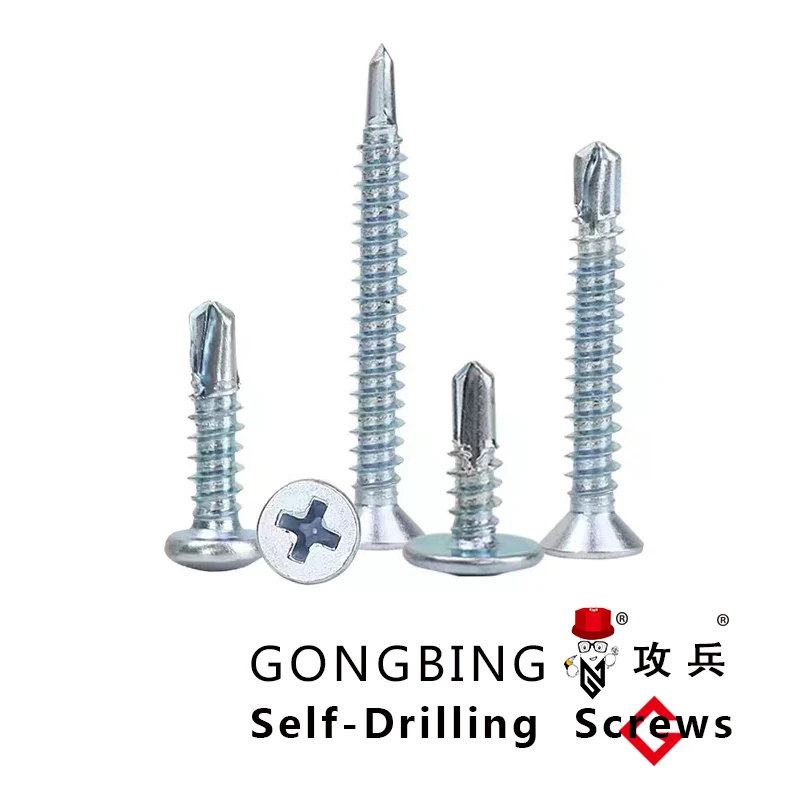Understanding the Benefits of 35mm Self-Drilling Screws for Your Projects
Understanding 35mm Self-Drilling Screws A Comprehensive Guide
Self-drilling screws, often referred to as Tek screws, are essential fasteners in various construction and manufacturing applications. Among the many sizes available, 35mm self-drilling screws stand out as a versatile choice for a multitude of projects. This article delves into what makes these screws unique, their benefits, applications, and tips for proper use.
What Are Self-Drilling Screws?
Self-drilling screws are specially designed fasteners that feature a drill bit tip, allowing them to create their own hole as they are driven into materials. This eliminates the need for pre-drilling, making them ideal for situations where speed and efficiency are crucial. The term self-drilling implies that the screw can penetrate both thin and thick materials, including metal, wood, and plastic, depending on their design.
Characteristics of 35mm Self-Drilling Screws
The 35mm length of these screws positions them as a mid-range option suitable for various applications. Typically, these screws come in various diameters and thread designs, which can affect their holding strength and suitability for different materials. They are commonly manufactured from high-quality steel, often coated to resist corrosion, ensuring durability and longevity in tough environments.
1. Length Measuring 35mm in length, these screws provide sufficient penetration into various materials, yielding a strong joint without excessive protrusion. 2. Thread Design The unique thread profile ensures maximum engagement with the material. Coarse threads are typically used for softer materials, while fine threads are better for harder substances.
3. Head Types Self-drilling screws come in various head types—such as hex, flat, and pan heads—allowing for versatility in application and aesthetic considerations.
4. Point Design The drill point not only facilitates easier entry but also minimizes the risk of splitting the material, a crucial feature for wooden applications.
Benefits of 35mm Self-Drilling Screws
Using self-drilling screws, particularly the 35mm variety, offers several advantages
- Time Efficiency The ability to drill and fasten in one step significantly reduces installation time, which is particularly beneficial on large projects or in situations where labor costs need to be controlled.
- Material Versatility These screws can be used in various materials like sheet metal, wood, and masonry, making them an indispensable tool in any contractor's arsenal.
- Enhanced Stability The deep threads provide strong holding power, making them suitable for applications that endure vibration, ensuring that the screws maintain their grip over time.
35mm self drilling screws

- Corrosion Resistance Many self-drilling screws come with protective coatings, making them suitable for outdoor and high-moisture applications without the risk of degradation
.Applications of 35mm Self-Drilling Screws
35mm self-drilling screws find applications in diverse fields, including
- Construction Ideal for fastening steel sheets, roof panels, and siding materials, they provide resilient structural integrity.
- HVAC Installations Used extensively in heating, ventilation, and air conditioning systems for securing ductwork and components.
- Automotive Industry Commonly employed in assembling car parts where metal-to-metal fastening is required.
- Furniture Assembly Perfect for quick and sturdy assembly of flat-pack furniture, especially for items that require secure joints.
Best Practices for Using 35mm Self-Drilling Screws
To optimize performance and ensure safety while using these screws, consider the following tips
- Match Length and Diameter Make sure the screw length and diameter are appropriate for the materials being joined.
- Drill Speed Use a power drill with adjustable speed settings to prevent overheating, which can weaken the screw and the material.
- Pilot Holes For very hard materials, consider drilling a pilot hole slightly smaller than the screw diameter to facilitate easier driving.
In conclusion, 35mm self-drilling screws offer remarkable versatility, durability, and efficiency. Their unique design allows for smooth installation across a range of materials, making them a staple in construction and fabrication. Whether you’re a seasoned professional or a DIY enthusiast, understanding the benefits and best practices for using these screws will enhance the quality and longevity of your projects.
-
Weatherproof Plastic Expansion Anchors for OutdoorNewsJun.06,2025
-
Sustainability in the Supply Chain: Eco-Friendly TEK Screws ProductionNewsJun.06,2025
-
Load-Bearing Capacity of External Insulation FixingsNewsJun.06,2025
-
Double Head Bolts: Enhancing Efficiency in Industrial MachineryNewsJun.06,2025
-
Corrosion Resistance in Chipboard Screws: Coatings for Wholesale DurabilityNewsJun.06,2025
-
Butterfly Toggle Bolts : Enhancing Structural ResilienceNewsJun.06,2025
